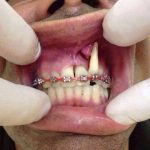It’s common in the Philippines to spread information on safety when it comes to natural disasters like typhoons. But most of us don’t realize that disasters and emergencies can happen to anyone, anytime, any day. We can never tell when we will be involved in an accident or be trapped in a burning building or be in a similar situation (knock on wood). No matter how cautious we are, there really are some things we don’t have control over.
It’s therefore a must to learn these top lifesaving tips. They cost nothing and are worth everything. It can make a world of a difference in times of great need and you might actually get to call yourself a hero one day.
1. Performing CPR

Cardiopulmonary resuscitation (CPR) is a combination of techniques, including chest compressions, designed to pump the heart to get blood circulating and deliver oxygen to the brain until definitive treatment can stimulate the heart to start working again. It used in many emergencies, including heart attack or near drowning, in which someone’s breathing or heartbeat has stopped.
CPR should be performed immediately on any person who has become unconscious and is found to be without a pulse. It consists of the use of chest compressions and artificial ventilation to maintain circulatory flow and oxygenation.
2. Doing the Heimlich Maneuver

More known as abdominal thrusts, the Heimlich maneuver is the best response to choking or when someone is having a very hard time breathing because food, a toy, or another object is blocking the throat or windpipe or airway. It’s an important immediate lifesaving skill as when a person’s airway is blocked, not enough oxygen could reach the lungs. Without oxygen, brain damage can occur in as little as 4 to 6 minutes.
The maneuver is done by reaching one’s arms around the waist of the victim and placing the fist (thumb side in) just above the person’s navel and grasping the fist tightly with the other hand. A quick, upward and inward thrust are done with the fist to dislodge the object in the airway.
While this is safe for older children and adults, it is not advised to perform this on infants since the maneuver can do more harm than good if not done correctly.
3. Preventing hypothermia

Even though the Philippines is a tropical country, it’s not uncommon for us to experience very cold weather after a typhoon.
Hypothermia is a medical emergency that occurs when the body loses heat faster than it can produce heat, causing a dangerously low body temperature, which in turn affects normal muscular and cerebral functions.
To stay warm in cold weather, remember to wear a hat or other protective covering to prevent body heat from escaping from your head, face, and neck and wear layers of clothing to keep the body warm; avoid activities that causes sweat; and stay as dry as possible.
4. Controlling bleeding

Blood will not coagulate if it is flowing freely. When one is wounded and bleeding, apply direct pressure to the wound with sterile gauze or a towel or T-shirt. Bleeding must first be controlled before any treatment can be done since the wound must be assessed by medical professionals. Take note to also elevate the wound above the heart.
When bleeding has slowed down when a pad or cloth is applied on the wound, do not remove the pad as clots may have started to form on it. Instead, just keep layering another pad or cloth on top of it until at the hospital or medical center.
5. Providing aspirin for heart attacks and strokes

Aspirin (acetylsalicylic acid) is normally used to treat pain, fever, arthritis, and inflammation. But did you know it can also reduce the risk of heart attack?
Aspirin benefits the heart by decreasing inflammation, inhibiting blood clots, and reducing the risk of death. Research has shown that regular aspirin use is associated with a reduction in death from all causes, particularly among the elderly, people with heart disease, and people who are physically unfit.
If you suspect someone having a heart attack or stroke, instruct them to chew and swallow a standard 325 mg dose of aspirin. Be careful to check, though, that the aspirin won’t interact negatively with other medications.
6. Escaping from a sinking car

If you live in the metro or by the ocean, there’s a big chance you encounter and experience floods during the rainy season. And if you drive, your car could be submerged in a heartbeat.
Should this happen, be very alert and quick to open the door to escape. If this doesn’t work, open or break through a window. Even if you can’t exit through the window, once enough water has entered the car to equalize the pressure, you will be able to open the door and swim to the water’s surface. The key here to be calm and not let the fear of drowning take over (even if it is really scary).
7. Exiting a burning building

Many building administrators frequently conduct fire drills in case of emergencies. Take note to listen and pay attention to these drills. Remember where all the exits are.
In the event that you’re in a burning building, check to see if a door feels hot before opening and never use an elevator during a fire emergency. Don’t lock yourself in a bathroom either. Many have the misconception that it is safe to hide out in bathrooms since there is water.
Fires don’t just cause burns but also suffocation through smoke. Be careful not to inhale smoke. The best way to do this is to crawl while exiting out of the building and covering up with a fire blanket, if it is available.
For minor flames, be sure you know how to operate a fire extinguisher.
8. Attending to a severe allergic reaction

Allergic reactions can happen in a blink of an eye. They can be mild like skin irritation, watery eyes, or sneezing or life-threatening like anaphylaxis, a severe reaction that can lead to respiratory failure and cardiac arrest.
While the mild reactions can just disappear on their own or be treated with antihistamines and decongestants, a person suffering from anaphylaxis must be brought to a hospital immediately. Signs include lightheadedness, nausea, and weak pulse. Swelling of the airways can interfere with breathing.
Emergency personnel usually administer epinephrine (adrenaline) immediately. The sooner the victim receives a dose of epinephrine, the greater his chances for survival. CPR may also be useful while waiting for the ambulance.
9. Treating an animal bite

Animal bites can be treated at home if the wound is only minor. Simply washing it with soap and water and applying antibiotic can do the trick.
However, for deep wounds, first aid can be done the same as bleeding wounds. Take note of infection as well such as swelling, redness, increased pain, or oozing.
Domestic pets cause most animal bites. Dogs are more likely to bite than cats but cat bites, are more likely to cause infection because they are usually puncture wounds and can’t be thoroughly cleaned. The risk of getting rabies from bites is high and immediate attention must be given. In the Philippines, it’s not unusual either to be bitten by rats or mice.
10. Keeping calm

This may be the simplest and easiest to learn but the hardest to execute. When emergencies happen, it is critical to determine exactly how bad the situation is and what to do next. Some situations seemingly become out of control because people tend to panic and sometimes, many try to help the victim all at once with their own first aid treatments. Remember that timing could be the key in saving someone’s life and every minute spent panicking and fretting is a minute of medical care.
You don’t have to be a parent or a caretaker to want to know all these. Whether it be to a family member or a stranger, it just comes naturally for humans to help a person in need. Keep these tips in mind and you might just save a life.



